Broad mites, scientific name Polyphagotarsonemus latus, are a significant pest in pepper cultivation, affecting plants worldwide. These minuscule pests, invisible to the naked eye, can cause substantial damage to pepper plants if not managed properly. This comprehensive guide covers the effects of broad mites on pepper plants, including the symptoms and damage they cause, their modes of travel, detection strategies, and effective treatment options.
Effects on Leaves and Damage
Broad mites preferentially target the young, tender parts of the plant, such as new leaves, stems, and flower buds. The damage caused by these pests can be devastating, leading to distorted growth, reduced plant vigor, and ultimately, a decrease in yield.
Symptoms on Leaves: Infested leaves often exhibit a variety of symptoms including curling, puckering, and twisting. The leaves might become brittle and take on a bronze or silver sheen. In severe cases, the leaf edges turn downward, and the growth of new leaves is significantly stunted. This damage is primarily due to the mites injecting toxins into the plant tissue as they feed.
Overall Plant Damage: Beyond the leaves, broad mites can affect the overall health of the pepper plant. Infested plants show stunted growth, with flower buds becoming deformed or dropping off prematurely. This not only impacts the current yield but can also affect the plant’s long-term productivity. In extreme cases, a heavy infestation can lead to the death of young plants.
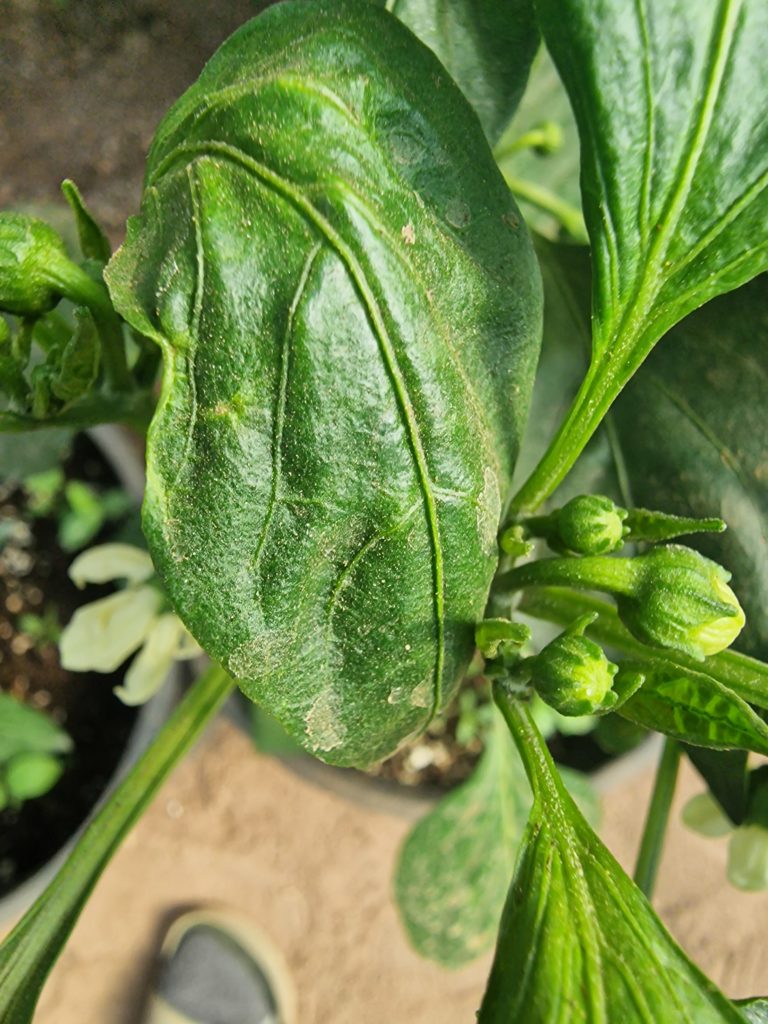
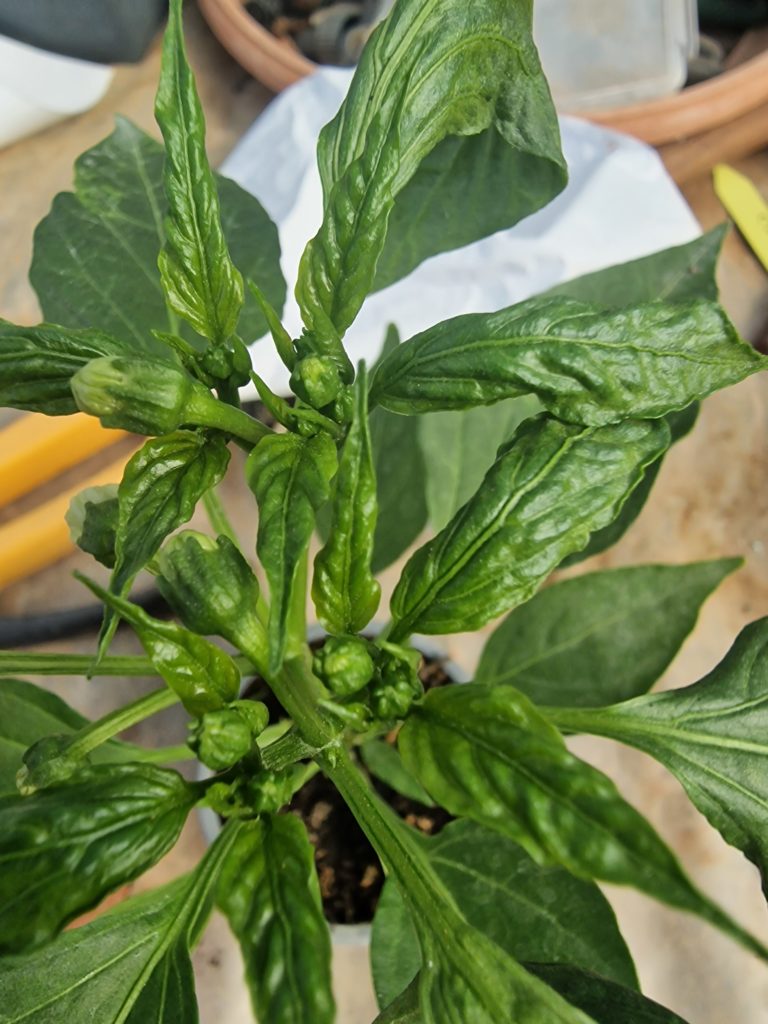
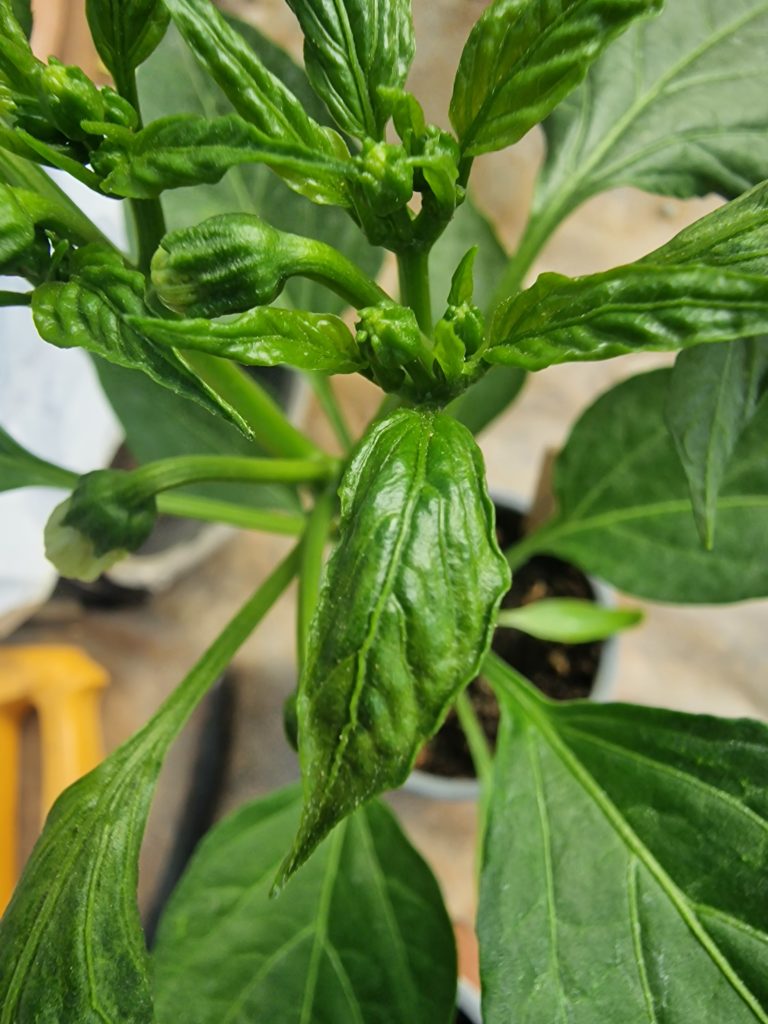
How They Travel
Broad mites are highly adept at spreading across plants and can travel in several ways:
- Physical Contact: They can move from plant to plant through direct contact between the foliage.
- Wind: Although not strong fliers, broad mites can be carried by the wind, especially when it dislodges them from an infested plant.
- Vectors: These pests can hitch a ride on other insects, humans, and animals, effectively spreading to new plants and areas.
- Contaminated Tools and Equipment: Using tools or machinery that have come into contact with infested plants can inadvertently spread mites to healthy plants.
How to Spot Them
Due to their microscopic size, spotting broad mites on pepper plants requires keen observation of the plant’s symptoms and, often, the use of a magnifying glass or microscope. Key indicators include:
- Unusual leaf curling and puckering without the presence of visible pests.
- Stunted new growth with a shiny or bronzed appearance.
- Deformed flower buds or fruit.
For a definitive diagnosis, a 20x magnification (or greater) hand lens or a microscope is needed to actually see the mites on the undersides of leaves or in crevices near buds.
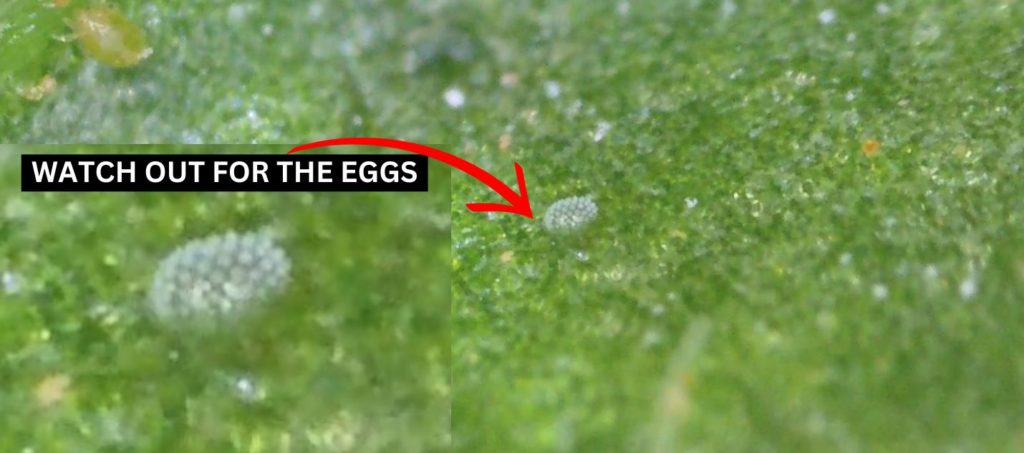
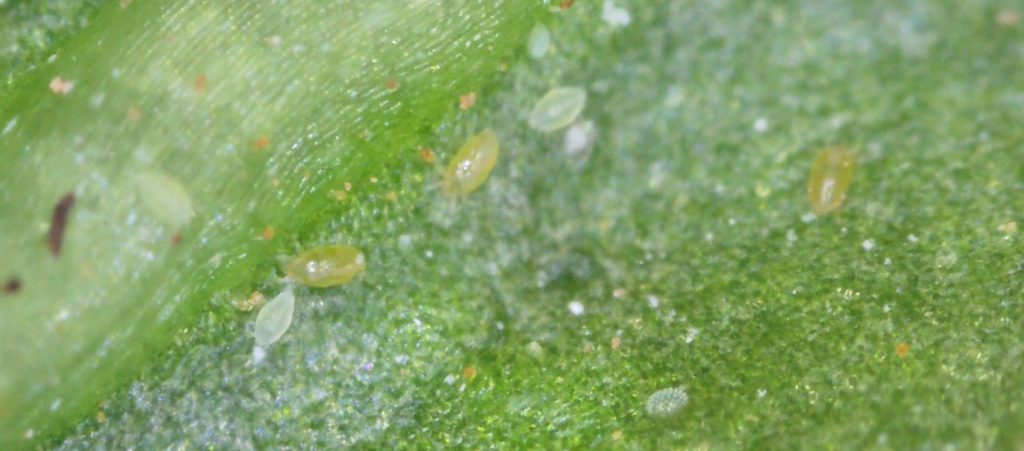
Treatment Options
Cultural Controls: Implementing good agricultural practices can help prevent broad mite infestations. Regular monitoring, maintaining plant health, and removing infested plant parts early can reduce mite populations significantly.
Biological Controls: Introducing natural enemies of broad mites, such as predatory mites (Amblyseius swirskii and Phytoseiulus persimilis), can help keep the pest population under control. These predators do not harm plants and can effectively reduce the need for chemical interventions.
Chemical Controls: In cases of severe infestation, targeted use of miticides can be effective. It’s crucial to choose products that are specifically labeled for use against broad mites and to rotate between different chemical classes to prevent the development of resistance. Always follow label instructions to avoid harm to beneficial insects and mitigate environmental impact.
Environmental Controls: Altering the environment to make it less hospitable to broad mites can also be an effective strategy. This can include increasing air circulation around plants, reducing humidity, and maintaining optimal watering practices.
Spray Twice to Control Broad Mites.
Spraying miticides is a crucial strategy in controlling broad mite infestations on pepper plants. These chemical agents specifically target mites at various life stages, offering a direct approach to reducing their population. The necessity of spraying miticides twice stems from the broad mite’s rapid life cycle and potential survival of eggs or mites that were in protected areas during the first application. The initial spray targets active mites, while the second application, typically a week later, aims to eliminate any newly hatched mites before they can reproduce. This two-step approach ensures a more thorough eradication, significantly reducing the chance of a rebound in the mite population.
When tackling broad mites on pepper plants, several miticides stand out for their effectiveness, and including brand names can help identify specific products. For abamectin-based treatments, products like Avid and Agri-Mek are widely used and trusted by growers for their efficacy against a range of mite species, including broad mites. Forbid and Judo, which contain spiromesifen, are also effective in targeting broad mites by inhibiting lipid synthesis, crucial for their growth and reproduction. Additionally, sulfur-based miticides, such as Microthiol Disperss, offer a more traditional approach to mite control and can be used in organic farming due to their natural composition. Rotating between these products can help prevent the development of resistance and ensure comprehensive control of broad mite populations.
Vertimec (Abamectin) and Tracer (Spinosad) Combination.
To expand on the selection of effective miticides against broad mites on pepper plants, including brand names like Vertimec and Tracer provides a broader perspective on the available options. Vertimec, a brand name for a formulation of abamectin, is another highly effective option that works by interfering with the nervous system of mites, leading to their paralysis and death. This makes it a solid choice for integrated pest management programs targeting broad mites.
Tracer, on the other hand, contains spinosad as its active ingredient. Although not a traditional miticide, Tracer is effective against a wide range of pests, including some mite species, by activating nicotinic acetylcholine receptors in the insect’s nervous system, causing paralysis and death. While Tracer is primarily known for its efficacy against caterpillars and thrips, it can be a useful part of a broader pest management strategy that may indirectly impact broad mite populations by controlling other pest vectors that contribute to mite spread.
Both Vertimec and Tracer should be used as part of an integrated pest management (IPM) approach, considering their impact on non-target organisms and the potential for pest resistance. Rotating between different active ingredients and incorporating biological control methods can help maintain the effectiveness of these products over time.
Conclusion:
Broad mites pose a significant threat to pepper plants, causing a range of symptoms that can severely impact plant health and yield. Early detection and proper identification are crucial for effective management. A combination of cultural, biological, and chemical controls, tailored to the specific conditions and severity of the infestation, can effectively mitigate the damage caused by these pests and ensure the healthy growth of pepper plants. Implementing preventive measures and monitoring plants regularly for signs of infestation will help maintain a productive and healthy garden or field.

Hello,
Thank you for this article!
I would like to ask if it would be possible to use the images displayed here in a scouting guide ? Thank you